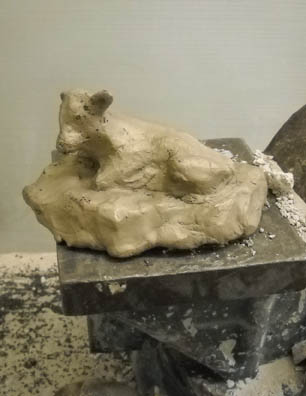Bronze Casting - Ceramic Shell Removed

Sand blasting removes the last bit of shell and polishes up the surface to something like a matte finish. You can, if you wish, polish the surface more with various ways and means.
The final step is to add the patina - a coating of various compounds which react with the bronze surface to produce a color somethng other than a metallic bronze color. For this a solution of "liver of sulfur" was used (called by casting cognoscenti as "liver"), which is a sulfur compound which is dissolved in water and then brushed on to the the heated surface. You usually heat the surface with a special torch and dab on the solution. Some practice is needed to get the right amount of heat distibuted properly so the solution sizzles just the right way. But in the end with "liver", you get a nice black surface.
There are many types of patinas, some simple, some complex, with colors that range from light tan to deep green or blue. Sometimes you even add pigment that adds even richer color. Virtually all bronze statues are intentionally patinaed. In fact, there are specialists in the field known as patinateurs.
When the patinaed statue cools to where it is warm but not too hot to the touch, you then brush on a small amount of wax. You spread the wax with a brush to a nice thin film. When the piece finally cools to room temperature, you buff it with a cloth, and you get the final staute that you saw on the original page.